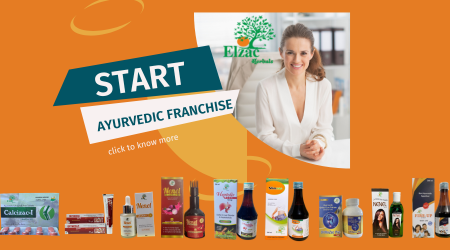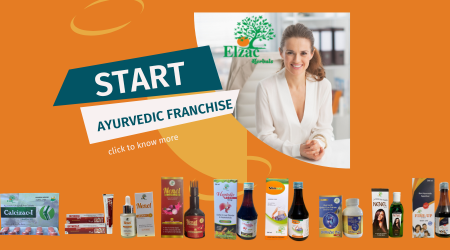🌿 Top Benefits of Starting an Ayurvedic PCD Franchise with Elzac Herbal India India’s Ayurvedic industry is booming — and smart entrepreneurs are looking for low-risk, high-growth opportunities in this sector. One of the most popular and successful business models is the Pcd Franchise . And when it comes to choosing the right company, Elzac Herbal India stands tall with its trusted products, partner-friendly policies, and growing reputation. ✅ 1. Low Investment, High Returns Unlike manufacturing or retail chains, PCD franchises require low startup costs . You don’t need a factory, R&D lab, or big infrastructure. With a small investment, you can start earning profits right from the first month — especially with high-quality, in-demand Ayurvedic products. 🌐 2. Monopoly Rights in Your Area Elzac offers area-wise exclusivity , meaning no other partner will compete with you in your territory. This gives you control, long-term market stability, and full opportunity to build yo...
Here are the best ingredients for healthy life. Improve immunity and promote better health
Ashwagandha (Withania Somnifera ): Ashwagandha is a powerful herb used in Ayurvedic medicines from centuries in variety of ailments. It is also used as general tonic and used as an adaptogen to help body with daily stress.It is useful in improving thinking ability, decreasing pain and inflammation. It has anti-aging properties also. Ashwagandha is used as aphrodisiac food and helpful in increasing sexual desire, helpful to treat infertility problems in men and women.
Kaunch Beej (Mucuna Pruriens): Kaunch beej is works as adaptogen and helps to lowering stress, reduce anxiety, improve focus, boost libido and improve mood. Kaunch beej works as an aphrodisiac and helps in increasing sexual desire.
Kasni/Chicory (Cichorium intybus): It cleanses and removes toxins from body. It helps in improving liver and kidney functions and increase digestion and activities of other herbs,
Bhringraj (Eclipta alba): Bhringaraj has immunity boosting properties which prevent us from harmful germs which is cause of many diseases.
licorice (Glycyrrhiza glabra): licorice works as nutraceutical in respiratory disorders. The root of this plant has been used for cough, colds, asthma, and COPD. It reduces inflammation and provide strength to body muscles.
Arjuna (Terminalia arjuna): Arjuna bark extracts also have excellent lipid-lowering properties. arjuna has been shown to reduce the 'harmful' LDL cholesterol and triglycerides and raise 'protective' HDL cholesterol.
Long pepper (Piper Longum): It has Antibacterial property, Relieves cold and cough, Improves dental health, Anti-Depressant property. It is useful in chronic bronchitis, asthma, constipation, gonorrhea, paralysis of the tongue, diarrhea, cholera, chronic malaria, viral hepatitis, respiratory infections, stomachache, bronchitis, diseases of the spleen, cough, and tumors.
Cloves (Suzygium aromaticum): It Contain Important Nutrients, High in Antioxidants, anti cancer and anti bacterial propery, Improve Liver Health, Regulate Blood Sugar and Promote Bone Health.
Ginger (Zingiber officinale): Ginger contains substances which have anti oxidant, anti inflammatory and relaxing properties. It also lowers blood sugar level and improves heart disease risk factors.
Chitrak (Plumbago zeylanical): Chitrak is an immunity booster herb which has anti-diarrheal, reduces inflammation, powerful digestive properties, and hepto protective etc. According to ayurveda, chitrak rejuvenate body and is used as rasayana.
Cumin (cuminum cyminum): Cumin promotes digestion. It is rich source of Iron. Cumin contains lots of plant compounds that are linked with potential health benefits.
Nutmeg (Myristica Fragrans Houtt): Nutmeg is rich in antioxidants, including phenolic compounds, essential oils, and plant pigments, all of which help prevent cellular damage and may protect against chronic diseases.
Kurchi (Holarrhena antidysenterica): It is helpful in treatment of constipation, colic, and diarrhea.
Punarnava (Boerhaavia diffusa): It is supposed to possess anti-aging, disease prevention, and life strengthening activities. It is effective in disorders of reproductive system, gastrointestinal system, respiratory system, urinary system, hepatic system/jaundice, cardiovascular system, and cancer etc.
Safed Musli (Asparagus adscendens): Safed musli is an aphrodisiac property. Herb has also been used in Ayurveda as an immunity booster and as a general health tonic.
Shatavari (Asparagus racemosus): It has anti oxidant and anti anxiety properties. It also used as diuretic, lowering blood sugar, relieving cough, treating diarrhea, improving gastric ulcer etc.
Trifala (Classical): Trifala is combination of three fruits bibhitaki, amalaki, and haritaki. Triphala have various health benefits like improving oral and digestive health and supporting skin healing.
loh bhasma (Classical): It increases hemoglobin level, gives strength and cures anemia, edema. Iron is tonic that gives vigour and longevity.
Vang bhasam (Classical): Beneficial in diabetes, urine related diseases and impotency
Product having these ingredients:
Saptras Vati Tablets 60 Tab Pet Bottle
Each Tablet Contains: Sudh Shilajeet 100 mg, Withania Somnifera 100 mg, Mucuna Pruriens 60 mg, Cichorium intybus 60 mg, Eclipta alba 60 mg, Glycyrrhiza glabra 20 mg, Terminalia arjuna 20 mg, Piper Longum 20 mg, Suzygium aromaticum 40 mg, Zingiber officinale 40 mg, Plumbago zeylanical 40 mg, cuminum cyminum 60 mg, Myristica Fragrans Houtt 40 mg, Holarrhena antidysenterica 40 mg, Boerhaavia diffusa 40 mg, Asparagus adscendens 100 mg, Asparagus racemosus 50 mg, trifala 40 mg,, loh bhasma 40 mg, vang bhasam 50 mg etc
Indications: Immunity Booster, weakness, nerve tonic, Multivitamin, multimineral and health supplement tonic for whole family
Dosage: 1-2 Tablets twice daily or as directed by the physician



Comments
Post a Comment